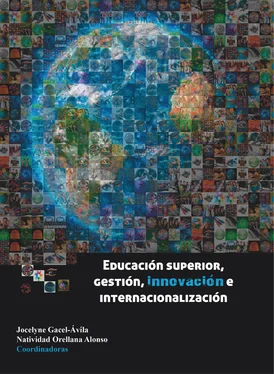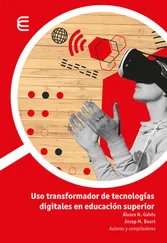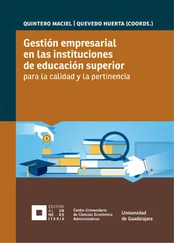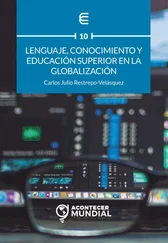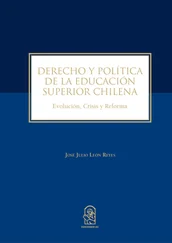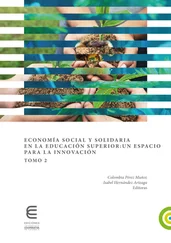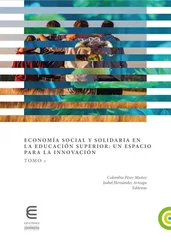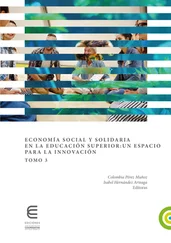Broek van den, G. (2012). Innovative Reserach-Based Approaches to Learning and Teaching. París: OCDE.
Brunner, J. J. (2008). El proceso de Bolonia en el horizonte latinoamericano: límites y posibilidades. Revista de Educación (Número extraordinario), 119-145.
— (2009). Tipología y características de las universidades chilenas. Santiago de Chile: Universidad Diego Portales.
Castells, M. (1996). La era de la información: economía, sociedad y cultura. La Sociedad en Red (Vol. 1). México: Siglo XXI.
CEPAL. (2008). Espacios Iberoamericanos: La Economía del Conocimiento. Santiago de Chile: CEPAL.
CHERPA-Network (2010). U-Multirank. Interim progress. Recuperado de .
CINDA (2010). El rol de las universidades en el desarrollo científico y tecnológico. Santiago de Chile: CINDA.
— (2011). Educación Superior en Iberoamérica. Informe 2011. Santiago de Chile: CINDA.
Dill, D., & Soo, M. (2005). Academic quality, league tables, and public policy: A cross-national analysis of university ranking systems. Higher Education, 49, 495-533.
Douglass, J., Thomson, G., & Zhao, C. (2012). Searching for the Holy Grail of Learning Outcomes. Center for Studies in Higher Education. Berkeley: University of California.
ECLAC (2010). Social Panorama of Latin America. Santiago de Chile: ECLAC.
— (2011). Latin America and the Caribbean in the World Economy. Santiago de Chile: United Nations-ECLAC.
E3M Project (2012). Conceptual Framework for Third Mission Indicator Definition. Recuperado de .
Fernández Lamarra, N. (2010). La Convergencia de la Educación Superior en América Latina y su Articulación con los Espacios Europeo e Iberoamericano: Posibilidades y Límites. Recuperado de .
Gacel-Ávila, J. (2012). Comprehensive Internationalisation in Latin America. Higher Education Policy, 1-18.
Hudzik, J. (2011). Comprehensive Internationalization. Washington, D.C.: NAFSA Association of International Educators.
Hazelknorn, E. (2011a). Wold-Class Unviersities or World-Class Sistems?Rankings and Higher Education Policy Choices .UNESCO Forum on Rankings and Accountability in Higher Education. [Presentación de Power Point].
— (2011b). Rankings and the Reshaping of Higher Education: The battle of world-class excellence. Houndmills: Palgrave Macmillan.
— (2012a). Understanding Rankings and the Alternatives: Implications for Higher Education. En S. Bergan, E. Egron-Polak, J. Kohler, L. Purser, & M. Vukasovic (Eds.), Handbook of Internationalisation of Eurpean Higher Education. Stuttgart: Raabe Verlag.
— (2012b). Focusing on the Total Quality Experience. Recuperado el 14 de agosto de 2012 de .
— (2012c). European «Transparency Instruments». Driving the Modernization of European Higher Education. En P. Scott, A. Curaj, L. Vlasceanu, & L. Wilson (Eds.), European Higher Eduation at the Crossroads: Between the Bologna Process and National Reforms. Heidelberg: Springer.
Harman, G. (2011). Competitors of Rankings: New Directions in Quality Assurance and Accountability. En J. Shin, R. Toutkoushian, & U. Teichler (Eds.), University Rankings. Heidelberg: Springer.
IAU (2005). 2nd Global Survey Report. París: IAU.
— (2010). 3rd Global Survey Report. París: IAU.
IESALC-UNESCO (2006). Informe sobre la educación superior en América Latina y el Caribe 2000-2005. Caracas: UNESCO.
— (2011). 4o Encuentro de Redes Universitarias y Consejos de Rectores. Recuperado el 2 de octubre de 2012 de .
INFOACES. (2012). Sistema Básico de Indicadores para la Educación Superior de América Latina. Recuperado de .
IREG. (2011). IREG Ranking Audit. Purpose, Criteria and Procedure. Recuperado el 11 de febrero de 2012, de .
Kehm, B., & Stensaker, B. (Eds.). (2009). University Rankings, Diversity and the New Landscape of Higher Education. Rotterdam: Sense Publishers.
Levin, R. (2010). Top of the Class. Foreign Affairs, 89 (3).
Liu, N., & Cheng, Y. (2005). Academic Ranking of World Universities. Methodolgies and Problems. Higher Education in Europe , 30 (2).
Lloyd, M., Ordorika, I., & Rodríguez-Gómez, R. (2011). Los Rankings Internacionales de Universidades, su impacto, metodología y evolución. México, D.F.: UNAM.
Longden, B. (2011). Ranking Indicators and Weights. En J. Shin, R. Tourkoushian, & U. Teichler (Eds.), University Rankings (pp. 73-104). Heidelberg: Springer.
López Leyva, S. (2012). Los rankings universitarios. Bases teóricas, metodología y su impacto en la educación superior global. Revista de la Educación Superior, 41 (161), 141-149.
Marginson, S. (2010). Global Comparisons and the University Knowledge Economy. En S. Marginson, Higher Education, Policy, and the Gobal Cometition Phenomenon. New York: Palgave Macmillan.
— (2012). Global University Rankings: The strategic issues. [Conferencia Magistral]. Recuperado de .
Marginson, S., & Wende van der, M. (2007a). To Rank or To Be Ranked: The Impact of Global Rankings in Higher Education. Journal of Studies in International Education, 11 (3-4), 306-329.
— (2007b). Globalisation and Higher Education. París: OCDE.
Martínez Rizo, F. (2012). Los rankings de universidades: una visión crítica. Revista de la Educación Superior, 40 (157), 77-97.
Nusche, D. (2008). Assessment of Learning Outcomes in Higher Education. París: OCDE.
Raan van, A. (2007). Challenges in the Ranking of Universities. París: UNESCO-CEPES.
Rauhvargers, A. (2011). Global University Rankings and their Impact. Brussels: EUA.
Salmi, J. (2009). The Challenge of Establishing World-Class Universities. Washington, DC: The World Bank.
Salmi, J., & A, Saroyan. (2007). League Tables as Policy Instruments: Uses and Misuses. Higher Education Management andPolicy , 19 (2), 31-68.
SCIimago Institutions Rankings (2012). SIR World Report 2012. Latin American Supplement. Recuperado el 20 de octubre de 2012, de .
Tremblay, K; Lalancette, D; Roseveare, D. (2012). AHELO Feasibility Study Report. Volume 1. París: OCDE.
UNAM-DGEI (2011). La UNAM en los rankings 2010: Balance comparativo de las principales clasificaciones internacionales. México, D.F.: UNAM.
— (2012a). Las Universidades Latinoamericanas ante los Rankings Internacionales. Recuperado el 16 de octubre de 2012, de .
— (2012b). Declaración Final. Las Universidades Latinoamericanas ante los Rankings Internacionales. Recuperado el 3 de octubre de 2012, de .
UNESCO-CEPES (2006). Berlin Principles on Ranking of Higher Education Institutions. Recuperado de .
UNESCO Institute of Statistics (2009). Global Education Digest. París: UNESCO.
Universitas 21 (2012). U 21 Ranking of National Higher Education Systems 2012. Recuperado de .
Usher, A., & Medow, J. (2009). A Global Survey of University Rankings and League Tables. In B. Kehm, & B. Stensaker (Eds.), University Rankings, Diversity, and the New Landscape of Higher Education. Rotterdam: Sense Publishers.
Usher, A., & Savino, M. (2006). A World of Difference: A Global Survey of University League Tables. Recuperado de .
Verburgh, A., Elen, J., & Lindblom, S. (2007). Investigating the myth of the relationship between teaching and researach in higher education: A review of empirical research. (Springer, Ed.) Studies on the Philosphy of Education , 26, 449-465.
Vught van, F., & Westerheijden, D. (2010). Multidimensional ranking: a new transparency tool for higher education and research. Higher Education Management and Policy, 22 (3).
Читать дальше
